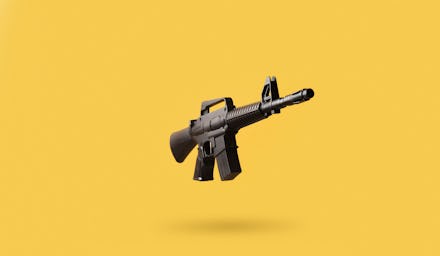Could red flag laws prevent mass shootings — and gun violence in general? Experts weigh in

Connor Betts, 24, who killed nine people with an AR-15-style rifle in Dayton, Ohio on August 4, reportedly displayed violent tendencies toward women. Meanwhile, the mother of 21-year-old Patrick Crusius, the main suspect of a shooting in El Paso, Texas that left 22 people dead just a day prior, had notified police about her son possessing an assault-style weapon. Many believe extreme risk protection orders, or red flag laws, could have stopped these tragedies.
These state court orders require those at high risk of endangering themselves or others to surrender their guns, and restrict their ownership and purchase of them. An August 20 Annals of Internal Medicine study suggests red flag orders may indeed help prevent mass shootings, but experts note that they need to be part of a broader strategy in curbing gun violence.
Seventeen states and Washington, DC have red flag laws of some sort, according to the Guns & America project. Under these laws, family members and police can file petitions for red flag orders with a court. (In Maryland, health professionals can also do so.) Red flag orders are typically used to prevent suicide, and research suggests that they’re effective in doing so — but whether they can stop mass shootings has remained murky.
Scientists at the University of California, Davis School of Medicine’s Violence Prevention Research Program assessed the effectiveness of California’s red flag law — one of the country’s first, per the Los Angeles Times — in stopping mass shootings. The law, which took effect in January 2016, stipulates that family members or law enforcement can petition a court to issue a Gun Violence Restraining Order (GVRO) and confiscate firearms, ammunition, and magazines for up to three weeks, TIME reports. A judge can delay return of the subject’s firearms for up to a year.
The researchers set out to analyze court records for all 414 GVROs issued from 2016 to 2018. So far, they’ve received 159. The Annals of Internal Medicine paper highlights 21 of them, which resulted in the confiscation of 52 guns. Subjects in three cases had bought guns but hadn’t yet completed the 10-day waiting period that California requires to pass between when someone buys a gun and when they receive it; in the end, GVROs prevented the guns from arriving.
Most of the people issued GVRO in the study were white men, with an average age of 35. The majority owned guns and made explicit threats. For instance, one GVRO was issued for a 21-year-old whose acquaintances notified police about an Instagram post of him toting an AR-style rifle, as well as other posts threatening his former high school. Another GVRO was issued after a car dealership manager told police about an employee who said he’d shoot his coworkers and supervisor in the event of his firing.
Based on the study authors’ search of print, Internet, and broadcast media, none of the individuals who had been issued a GVRO committed homicide, nor did they die by suicide.
The paper states that there’s no way to know whether the individuals studied would’ve carried out violence if they hadn’t been issued GVROs, and that the researchers “make no claim of a causal relationship.” Maybe the GVRO recipients ultimately didn’t mean to follow through on their plans, or something other than the orders stopped them, Garen J. Wintemute, director of the Violence Prevention Research Center and the study’s lead author told TIME. Still, he thinks “the evidence suggests that extreme risk protection orders have a role to play in preventing mass shootings, but also in preventing firearm suicide and homicide.”
A recent APM Research Lab/Guns & America/Call To Mind poll found that most Americans support red flag orders, whether they’re filed by family members or police. Yet the National Rifle Association (NRA) has been trying to thwart efforts to pass such legislation, as Jonathan Metzl, a professor of sociology and psychiatry at Vanderbilt University, said in VICE.
Metzl tells Mic that the study on California’s red flag law (which he wasn’t involved in) is “promising,” but echoes Wintemute’s cautiousness against extrapolating too much from the data, and emphasizes the need for more research.
Metzl adds that red flags laws alone won’t be enough to prevent mass shootings and that other factors, such as state gun laws, are likely more predictive of these tragedies. For instance, a study published in March found that states with less restrictive gun laws had higher mass shooting rates. The gun laws in neighboring states seem to matter, too. Take the gunman who fired an AK-47 style rifle at the Gilroy Garlic Festival in California on July 28; although such a firearm couldn’t have been legally purchased in California, he was able to buy it legally in neighboring Nevada, which has less stringent gun legislation, The Mercury News reports.
“All the red flag laws in the world are not going to be effective if they’re not implemented in coordination with state, regional, and national gun laws,” Metzl says. “They’re one piece of an overall strategy.”